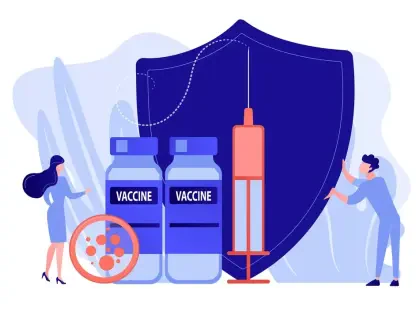In an era where digital technology permeates every facet of life, the impact of screen time on adolescents’ mental health has become an urgent topic of discussion and concern. The widespread use of smartphones and social media platforms has drastically changed how teenagers interact with the world around them, but the consequences of this digital revolution are complex and multifaceted. As reports of increased anxiety, depression, and social isolation among teenagers continue to rise, stakeholders from various sectors are keen to explore whether implementing screen time limits could potentially serve as a remedy. Understanding the balance between beneficial and harmful technology use involves a nuanced evaluation, incorporating the perspectives of scientific research, mental health experts, and policymakers.
The Growing Concerns: Excessive Screen Time and Mental Health
The conversation around excessive screen time is rooted in its potential to negatively impact adolescents both psychologically and physically. Studies indicate a staggering 95% of teenagers engage in some form of social media, with nearly half being online almost continuously. This significant amount of screen exposure has been linked to increasing instances of mental health challenges such as anxiety, depression, and loneliness. Such conditions are exacerbated by reduced physical activity and face-to-face interactions, signifying a shift in societal norms towards digital dependency. Mental health experts, like psychologist Jonathan Haidt, argue the prominence of smartphones could contribute to these troubling trends, noting correlations between extensive phone use and deteriorating mental health indicators like poorer sleep, heightened impulsivity, and diminished attention spans. These adverse effects often disproportionately impact young girls, who face unique risks such as body dissatisfaction and the prevalence of mental disorders.
Meanwhile, the ramifications of these findings extend beyond individuals to broader societal concerns, leading public figures and organizations to demand action. The U.S. Department of Health and Human Services has underscored the importance of addressing this burgeoning issue, urging communities to consider screen time limits as a viable solution. However, the assertion that excessive screen time directly causes mental health problems remains debated. Critics argue that correlation does not necessarily mean causation and caution against simplistic conclusions that don’t consider the myriad contributing factors involved in mental health issues.
Policy Responses and Their Implementation Challenges
Drawing from the growing apprehension surrounding screen time, several states across the U.S., along with countries like France, Turkey, and Australia, have begun to implement policies that regulate or even ban smartphones and social media usage among school-aged children. These measures aim to mitigate potential harms by restricting access during critical developmental stages. Despite these efforts, the effectiveness and practicality of such policies remain contentious topics within public discourse. Enforcement of smartphone bans faces significant hurdles, including legal challenges related to First Amendment rights and privacy concerns. For instance, the process of establishing age verification systems is complex, and clear guidelines are needed to identify which digital platforms warrant restrictions. Additionally, ensuring that policy enforcement is both comprehensive and respectful of individual rights poses another set of challenges. Beyond legal issues, ethical questions arise regarding unintended effects, such as the increased likelihood of driving youths to explore less-regulated online spaces.
Addressing these challenges demands careful consideration of technological, psychological, and cultural factors. Advocates of screen time limits call for strategic implementation that balances protective measures with respect for adolescents’ developmental needs. The nuanced role of technology as both a potential hazard and a tool for positive engagement highlights the need for a sophisticated approach. Technological literacy and mental health education are areas of focus in developing policies that are not only effective but also equitable.
Benefits and Drawbacks: Evaluating Digital Interactions
While the narrative around screen time often highlights its negative implications, technology’s role in a teenager’s life is inherently complex, offering both potential risks and benefits. Social media platforms, despite being linked to mental health issues, can serve as vital arenas for social support and connection, particularly for marginalized youth who may feel isolated in their immediate environments. Moreover, technology facilitates educational opportunities and can foster creativity, providing a sandbox for teenagers to explore their interests and talents. Balancing these benefits against the drawbacks is challenging. The constant connectivity enabled by modern devices can lead to overstimulation and a diminished ability to disconnect from stressors, thereby impacting mental health adversely. Meanwhile, the asynchronous nature of digital communication lacks the depth and empathy possible in face-to-face interactions, adding to potential feelings of loneliness and misunderstanding among adolescents.
Recognizing and mitigating these disadvantages involves encouraging healthy digital habits and empowering young people to navigate the digital landscape responsibly. Integrating digital literacy education within school curriculums can equip teenagers with the skills they need to manage their screen time proactively. Parents and educators play crucial roles in modeling and reinforcing balanced technology use, advocating for open communication about the potential risks and rewards of digital engagement.
Considerations for Comprehensive Solutions
The discourse surrounding screen time and mental health suggests the necessity for a multi-dimensional approach that addresses the complexities of the digital age. Simple bans or restrictions may not provide the sustainable solution many seek. Instead, a blend of strategies aimed at promoting healthier digital environments could yield more meaningful results. Policy recommendations from experts emphasize the value of fostering collaborative efforts among parents, educators, policymakers, and mental health professionals. Developing structured approaches, such as setting clear guidelines on device usage and encouraging offline activities, could aid in safeguarding adolescents’ mental well-being without stifling their digital experiences. Furthermore, enhancing digital platforms through improved content moderation, rigorous privacy standards, and age-appropriate features contributes to creating safer online spaces. Innovations in technology itself, such as AI-driven tools designed to monitor and alert overuse, represent another frontier in tackling excessive screen time.
Toward Balanced Solutions: Recommendations for Action
The discussion on excessive screen time revolves around its potential negative effects on adolescents, both psychologically and physically. Research shows an overwhelming 95% of teenagers use social media, with nearly half being constantly online. This extensive screen exposure correlates with rising mental health issues like anxiety, depression, and loneliness, largely due to reduced physical activity and face-to-face interactions, highlighting a societal shift to digital dependency. Experts, such as psychologist Jonathan Haidt, suggest the surge in smartphone use could be worsening these issues, linking it to problems like poor sleep, increased impulsivity, and reduced attention spans. These effects often hit young girls particularly hard, with added risks like body dissatisfaction and mental disorders.
These findings have raised broader societal concerns, prompting calls for action from public figures and organizations. The U.S. Department of Health and Human Services emphasizes the need for addressing this growing issue, suggesting screen time limits as a potential solution. Nevertheless, the debate continues, as critics warn that correlation does not imply causation, stressing the complexity of mental health issues with various contributing factors.









